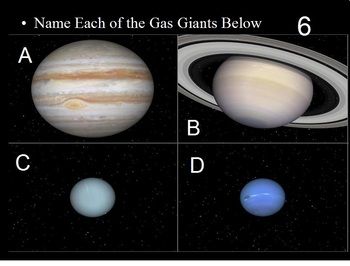Gas Planets
We know that water for example can have more than 3 material states here. First of all we have 4 gas planets which are Jupiter Saturn Uranus and Neptune personally I like Neptune and Uranus the most P So how do the gas planets come about.
A gas planets are giant planets composed mainly of hydrogen and helium.

Gas planets. The four gas giants in our solar system are Jupiter Saturn Uranus and Neptune. It is even possiblehypothesized that you get an metal if. They are the furthest planets from the Sun.
My first planet images with the Celestron 8 by the way. In the warmer parts of the disk closer to the star rocky planets begin to form. When the terrestrial planets were forming they remained immersed in a disk of gas and dust.
Jupiter and Saturn are the outer gas giants. Initially Jupiter and Saturn are the gas planets of the Solar System. Their compositions are mostly gases such as hydrogen and small amounts of rocky material mostly at their cores.
Uranus and Neptune are the outer ice giants. These planets like Jupiter and Saturn in our solar system dont have hard surfaces and instead have swirling gases above a solid core. With a 16x barlow the focal length was about 3250mm.
The inner rocky planets are Mercury Venus Earth and Mars. Uranus and Neptune are smaller and much colder and are known as ice giants as well as gas giants. Gas giant exoplanets can be much larger than Jupiter and much closer to their stars than anything found in our solar system.
Gas giants are large planets that contain more than 10 times the mass of Earth they are also known as the Jovian or Outer Planets. This is how Jupiter Saturn Uranus and Neptune the gas giants of our solar system are thought to have formed. Let me tell you a little story about our solar system past.
Thousands more planets have been discovered. A large planet having a thick gaseous atmosphere but no solid surface due to a low abundance of rock or other solid material. Was originally synonymous with giant planet but in the 1990s it became known th.
Copyright 2016 by Houghton Mifflin Harcourt Publishing Company. The four gas planets in our solar system are jupiter saturn neptune and uranus. The term gas planet.
In recent years astronomers have designed a new class called the dwarf planets. Jupiter and Saturn are thought to have formed first and quickly within the first 10 million years of the solar system. To answer the question gas planets do probably have a solid core because the pressure is so enormous that the atoms connect into a crystal-like structure.
The gas was partially supported by pressure and so did not orbit the Sun as rapidly as the planets. 15x drizzled in AS3 the planets turned out reasonably large. Jupiter Saturn Uranus and Neptune are gas giants.
The resulting drag and more importantly gravitational interactions with the surrounding material caused a transfer of angular momentum and as a result the planets gradually migrated to new orbits. The outer planets of the Solar System - Jupiter Saturn Uranus and Neptune - are gas giants a designation which applies to planets that are primary composed of hydrogen and helium. Beyond Neptune a newer class of smaller worlds called dwarf planets reign including longtime favorite Pluto.
The gas planets are Jupiter Saturn Uranus and Neptune. These are smaller worlds not quite big enough to be considered a standard planet and include Pluto. Mercury Venus Earth Mars.
The first gas planets in 2021 after a two months too long rainy season that did not seem to end. The transparency left much to desire but the 90 humid air was calm. The gas planets are composed primarily of hydrogen and helium and generally have low densities rapid rotation deep atmospheres rings and lots of satellites.
NASAs newest rover Perseverance landed on Mars on Feb. The small planets have diameters less than 13000 km. American Heritage Dictionary of the English Language Fifth Edition.
A gas giant is a large planet mostly composed of helium andor hydrogen. There are four gas planets in our Solar System. They each have many moons.
Jupiter and Saturn are known as gas giants because of their enormous size. The gas planets in our solar system are beautiful planets but how much do we know about them. The outer planets are gas giants Jupiter and Saturn and ice giants Uranus and Neptune.
They are much bigger than the rocky planets.

Gas Giant Planets May Contain Layers Of Dark Hydrogen Say Physicists Physics Planetary Science Sci News Com Gas Giant Planets Planetary Science

Mass One Thousandth That Of The Sun But Is Two And A Half Times The Mass Of All The Other Planets In Our Solar System Space And Astronomy Planets

Planets Quiz Game Jupiter Saturn Uranus Neptune Outer Planets Gas Giant Review Games

Home School Astronomy Learn Astronomy In Two Semesters Perfect For Homeschoolers Homeschool Astronomy Astronomy Lessons Homeschool Science














